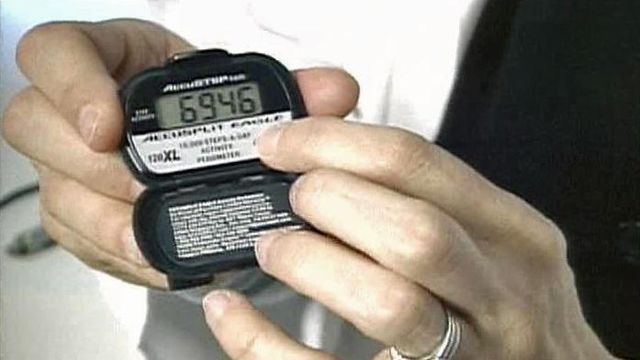Health Team
Study: Pedometers Produce Better Fitness Results
Stanford University researchers wanted to know if pedometers could help motivate inactive patients to get moving. They reviewed pedometer-use studies that included data from more than 2,700 people.
Posted — UpdatedEvery step Calla Fleisher takes is tallied on a pedometer. She has used it and a step diary every day for two years.
“I'm definitely fitter and my blood pressure is down,” Fleisher said. “All my blood results are better. My fitness is 100 times better.”
Stanford University researchers wanted to know if pedometers could help motivate inactive patients to get moving. They reviewed pedometer-use studies that included data from more than 2,700 people.
Their findings appeared in the Journal of the American Medical Association.
“Pedometer users increase their physical activity,” said Dr. Dena Bravata, with the Stanford School of Medicine. “They increased their physical activity by about 2,000 steps per day, which is equal to about a mile per day or 100 calories a day.”
A typical goal for pedometer users is 10,000 steps a day, but it's having a goal that matters.
“We found that having any goal, either 10,000 steps per day or an individualized goal, was associated with improvements in physical activity,” Bravata said.
People in the study who used pedometers and had step goals lowered their body mass index and/or their blood pressure. A daily step diary was also key.
Fleisher said it also improved her diet, but it's the pedometer that has inspired her.
“The pedometer really acts as a friend that you're kind of having this conversation with everyday. You know, how well did I do? Oh, I've got to do a little better tomorrow,” she said.
In her case, it also tells her "good job.”
Pedometers can be bought for under $20. An inexpensive cover can keep people from accidentally erasing their step count during the day.





